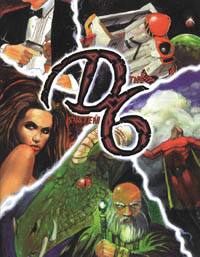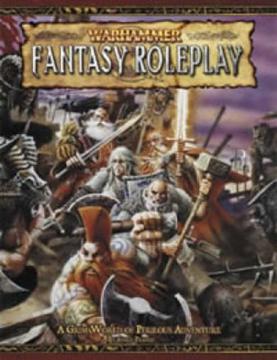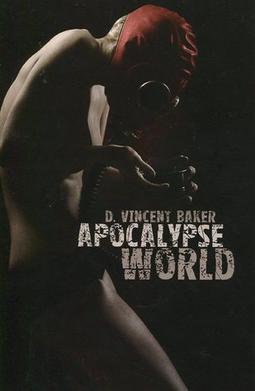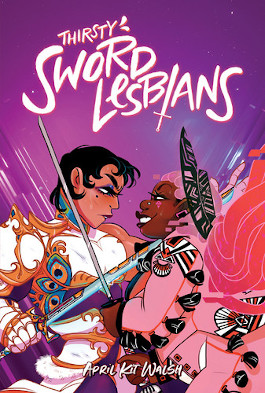
Call of Cthulhu is a horror fiction role-playing game based on H. P. Lovecraft's story of the same name and the associated Cthulhu Mythos. The game, often abbreviated as CoC, is published by Chaosium; it was first released in 1981 and is in its seventh edition, with licensed foreign language editions available as well. Its game system is based on Chaosium's Basic Role-Playing (BRP) with additions for the horror genre. These include special rules for sanity and luck.

Keith Baker is an American game designer and fantasy novel author. In addition to working with Wizards of the Coast on the creation of Eberron, he has also contributed material for Goodman Games, Paizo Publishing and Green Ronin Publishing. In 2014, Baker and Jennifer Ellis co-founded the indie tabletop game company Twogether Studios.

Fate is a generic role-playing game system based on the Fudge gaming system. It has no fixed setting, traits, or genre and is customizable. It is designed to offer minimal obstruction to role-playing by assuming players want to make fewer dice rolls.

The D6 System is a role-playing game system published by West End Games (WEG) and licensees. While the system is primarily intended for pen-and-paper role-playing games, variations of the system have also been used in live action role-playing games and miniature battle games. The system is named after the 6-sided die, which is used in every roll required by the system.

The Legend of the Five Rings Roleplaying Game is a role-playing game originally written by John Wick and published by Alderac Entertainment Group, under license from Five Rings Publishing Group, in 1997. The game uses the Legend of the Five Rings setting, primarily the nation of Rokugan, which is based on feudal Japan with influences from other East Asian cultures.

Warhammer Fantasy Roleplay or Warhammer Fantasy Role-Play is a role-playing game set in the Warhammer Fantasy setting, published by Games Workshop or its licensees.

Fiasco is a role-playing game by Jason Morningstar, independently published by Bully Pulpit Games. It is marketed as a "GM-less game for 3–5 players, designed to be played in a few hours with six-sided dice and no preparation". It is billed as "A game of powerful ambition and poor impulse control" and "inspired by cinematic tales of small time capers gone disastrously wrong—films like Blood Simple, Fargo, The Way of the Gun, Burn After Reading, and A Simple Plan."

The One Ring Roleplaying Game is a tabletop role-playing game set in J. R. R. Tolkien's Middle-earth, set at the time between The Hobbit and The Lord of the Rings. Designed by Francesco Nepitello and Marco Maggi, the game was initially published by Cubicle 7 in 2011 under the title The One Ring: Adventures over the Edge of the Wild. Cubicle 7 continued to publish the first edition of the game until 2019. Nepitello and Maggi developed the second edition, which is published by Free League Publishing under the same title, The One Ring Roleplaying Game.
The Star Wars Roleplaying Game is a tabletop role-playing game set in the Star Wars universe, first published by Fantasy Flight Games in 2012. It consists of different standalone cross-compatible games where each one is a separate themed experience. The sourcebooks support games set from the Clone Wars era to the original Star Wars trilogy era; there is limited support for the Star Wars sequel trilogy era. Since 2020, the game line has been maintained by Asmodee's subsidiary Edge Studio.

Apocalypse World is a post-apocalyptic roleplaying game by D. Vincent Baker and Meguey Baker, published in 2010 with only an implied setting that is fleshed out by the players in the course of character creation. It was the game for which the Powered by the Apocalypse engine was developed. On release, Apocalypse World won the 2010 Indie RPG Award and 2011 Golden Geek RPG of the year.

Dungeon World is a tabletop fantasy roleplaying game created by Sage LaTorra and Adam Koebel. The game uses the Powered by the Apocalypse engine originally designed for Apocalypse World and used in Monsterhearts and other games. The game is advertised as having old school style with modern rules. The text of the game was released under the Creative Commons Attribution 3.0 Unported License.

Powered by the Apocalypse (PbtA) is a tabletop role playing game design framework developed by Meguey Baker and Vincent Baker for the 2010 game Apocalypse World and later adapted for hundreds of other RPGs.
The Cortex Plus System is a toolkit RPG system that evolved from Margaret Weis Productions, Ltd's Cortex System. It has been used for four published games and one published preview to date, and the design principles are in the Cortex Plus Hacker's Guide, a book of advice in how to create new games using Cortex Plus, and list of new games produced via Kickstarter. According to the Hacker's Guide there are three basic 'flavors' of Cortex Plus; Action, Drama, and Heroic.

13th Age is a d20 fantasy role-playing game designed by Rob Heinsoo and Jonathan Tweet, and published by Pelgrane Press. 13th Age has been well supported with over 25 supplements published since its 2013 release, the most recent in 2022.
The Cortex System is a collection of related roleplaying games. Its most recent iteration, Cortex Prime, was designed by Cam Banks and published by Fandom Tabletop. Prior versions appeared in the licensed roleplaying games published by Margaret Weis Productions, where it was used as the house system. Cortex is an adaptable game system focusing on characterization and story development.

Avatar Legends: The Roleplaying Game is a fantasy tabletop role-playing game produced by Magpie Games. It is set in the world of the animated television series Avatar: The Last Airbender and The Legend of Korra, and takes place in five different time periods. It sees players take the roles of martial artists, technological experts, or benders – people who can manipulate one of the four classical elements – who fight for balance in the world while also working towards their own goals and struggling with inner balance, represented by opposing ideals held by a character.

Thirsty Sword Lesbians is a narrative-focused tabletop role-playing game that emphasizes telling "melodramatic and queer stories". The game was funded via a 2020 Kickstarter campaign and published by Evil Hat Productions in 2021. It uses a modification of the Powered by the Apocalypse game system.

Forbidden Lands is a fantasy role-playing game published by Free League Publishing in 2018. It takes place in a medieval fantasy post-apocalyptic setting, where the destruction has limited itself to one kingdom. A fatal mist, which had killed any person venturing outside at night, has cleared. Adventurers may now explore the uninhabited castles and cities left behind.

Ironsworn is an indie role-playing game written and self-published by Shawn Tomkin. Its Ironlands setting is low fantasy, set in a rugged frontier. The game received the 2019 ENNIE Gold Winner Award for Best Free Game/Product. Rob Wieland for Forbes named Ironsworn one of his favorite RPG products of 2022 and one of the best fantasy tabletop role-playing games for solo play.

Kids on Bikes is a tabletop role-playing game system, and a series of games that use that system. It has won multiple ENNIE Awards.
















